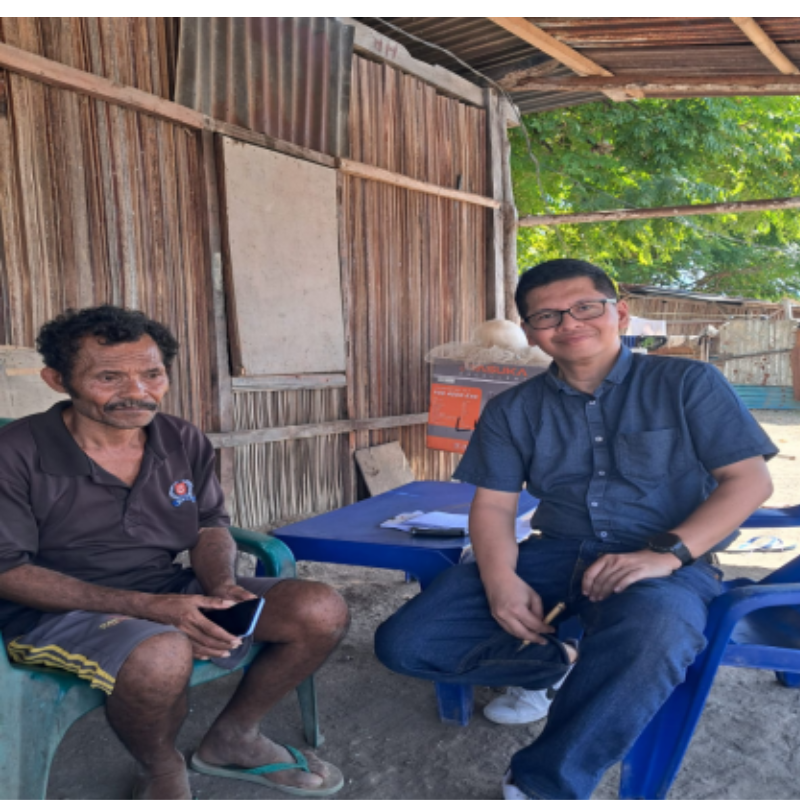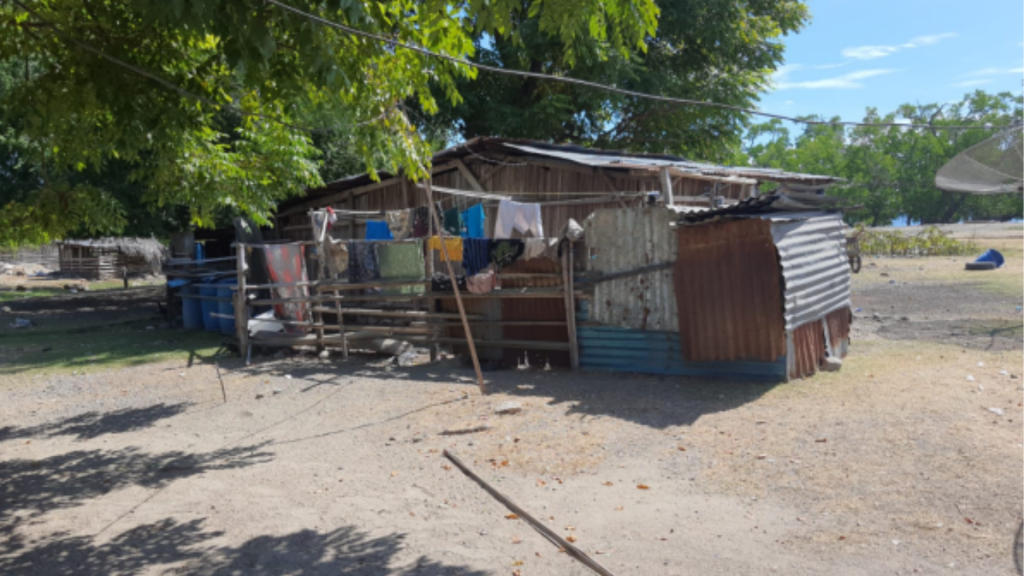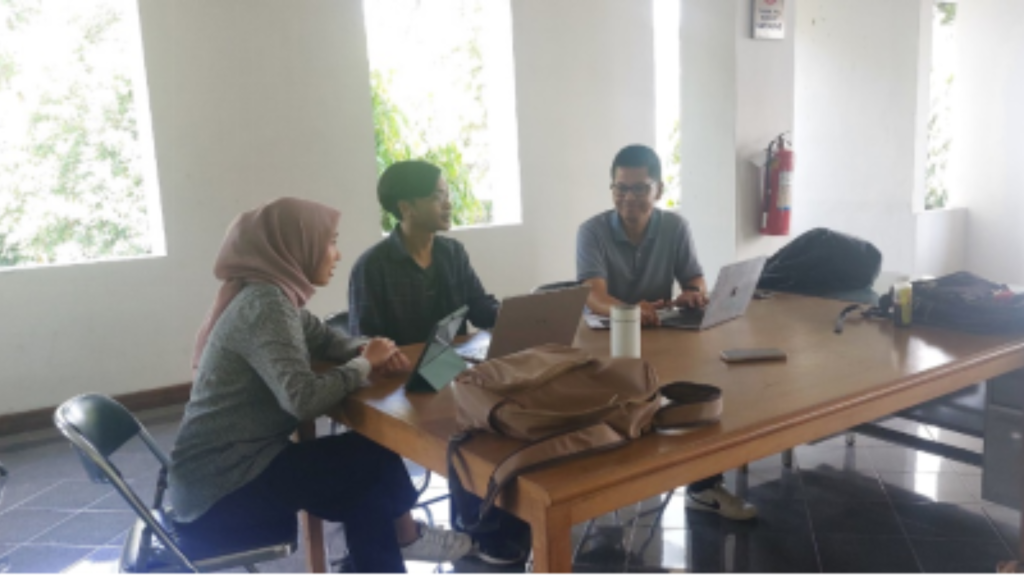Conditions similar to those in Sadi Village were also found in Silawan Village. The researchers made their first visit and met with the Head of Silawan Village to explain the purpose of this study. Silawan Village is located 17.5 km from Atambua or a 29-minute drive by car. Silawan Village is close to the Integrated State Border Post (PLBNT) in Motaain, which directly borders Timor-Leste. Many youths from Silawan Village rely on the Motaain PLBNT for employment and livelihood. Meanwhile, other residents sustain themselves by working as fishermen. However, fishing comes with its own challenges; in addition to facing rough seas and strong winds, the fish catch is highly dependent on the weather, waves, and luck. This leaves them in a constantly vulnerable position filled with uncertainty daily.

Interview with an ex-Timor Leste refugee informant in Silawan Village who works as a fisherman, living in extremely poor housing conditions
Similar to the situation in Sadi Village, the community in Silawan Village also faces customary obligations they must fulfill. As a survival strategy, they rely on support from relatives, both those living in Silawan Village and in Timor-Leste, to help each other economically. Interestingly, some ex-refugees who initially settled in Silawan eventually returned to Timor-Leste, where they still have assets such as land or gardens that they can cultivate. Some even frequently travel back and forth between Silawan Village and Timor-Leste. When asked about the differences between the conditions in Silawan Village and their area in Timor-Leste, they responded, “it’s the same.” Having businesses in both Silawan Village and Timor-Leste is a smart strategy for diversifying income sources to survive economically.

Fisherman’s house in Silawan Village
However, government intervention is still seen as insufficient in providing economic assistance. The government cannot do much to improve or renovate housing because some of the homes occupied by ex-East Timorese refugees were built on land owned by others, and they live there as temporary tenants. They could be asked to vacate at any time.
It is also interesting to discuss accessibility to village funds, which is one of the focuses of this study. The majority of informants interviewed admitted that they have never been involved in village fund meetings. One informant claimed that the village funds are “controlled” by the Village Head, and those who are “close” to him will benefit. However, others believe that the Village Head has already determined who will be involved in the village fund meetings as representatives of the community based on their ability to express their opinions. Residents with low levels of education tend to remain silent when invited to such discussions.
As a closing note, although the distinction between ex-refugees and native residents seems to have faded, the majority of the population in both Sadi and Silawan Villages still live in poverty. This means that labeling someone as an ex-refugee does not tend to result in discriminatory practices by aid providers.
The local government claims not to differentiate in providing aid to the community. The decision on who participates in the village fund meetings is not based on whether someone is a refugee or not. However, there is a clear indication that the local government is limited in its ability to provide assistance, both to ex-refugee communities and native residents. Amid these governmental constraints, ex-refugee communities are actually supported by local residents, such as by lending them land to live on or cultivate. This assistance is driven by a sense of kinship, as ex-refugees are still regarded as belonging to the same ethnic group or tribe.
Poverty in East Nusa Tenggara Province in general, and Belu Regency in particular, is an extremely complex issue. In addition to limited budgets due to low regional income, there are also cultural and mental challenges that entrap communities in poverty. Intervention rooted in good governance, supported by sufficient budgetary capacity, including village fund resources, is essential to addressing the complex dimensions of cultural poverty in this region.

Team meeting discussing field findings.
SDG 1 (No Poverty), SDG 16 (Peace, Justice, and Strong Institutions)
CONTRIBUTORS: Dr.Vidhyandika D Perkasa MSc, Rizky Indra Dewangga, dan Salsabila Azzahra.
